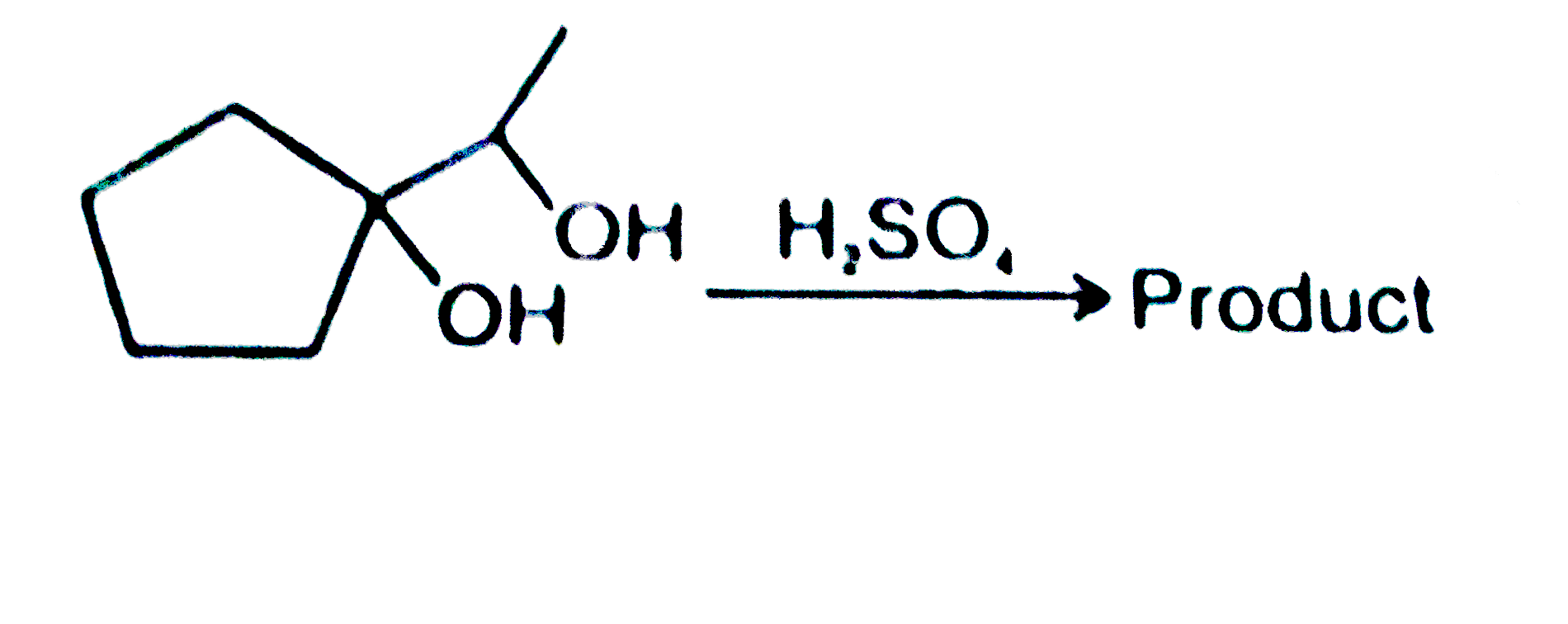Alcohols react with active metals e.g., Na, K etc., to give corresponding alkoxides. Write down the decreasing order of reactivity of sodium metal towards primary, secondary and tertiary alcohols.
To determine the decreasing order of reactivity of sodium metal towards primary, secondary, and tertiary alcohols, we can follow these steps:
1. Understanding Alcohol Structure:
- Primary alcohols (1°) have one alkyl group attached to the carbon bearing the hydroxyl (-OH) group.
- Secondary alcohols (2°) have two alkyl groups attached to the carbon with the -OH group.
- Tertiary alcohols (3°) have three alkyl groups attached to the carbon with the -OH group.
2. Effect of Alkyl Groups:
- Alkyl groups exhibit a +I (inductive) effect, which means they donate electron density towards the oxygen atom in the hydroxyl group.
- As the number of alkyl groups increases from primary to tertiary, the electron density on the oxygen atom also increases.
3. Bond Strength Consideration:
- With increased electron density on the oxygen, the O-H bond becomes stronger. This means that the acidic strength of the alcohol decreases as the number of alkyl groups increases.
- Primary alcohols have the weakest O-H bond, making them more reactive with sodium.
4. Reactivity of Sodium with Alcohols:
- Sodium (Na) is a basic metal and reacts with alcohols, which are weak acids. The reactivity of sodium with alcohols is inversely related to the acidic strength of the alcohol.
- Since primary alcohols are the most acidic, they react more readily with sodium, followed by secondary alcohols, and lastly tertiary alcohols.
5. Final Order of Reactivity:
- Therefore, the decreasing order of reactivity of sodium metal towards alcohols is:
- Primary alcohols (1°) > Secondary alcohols (2°) > Tertiary alcohols (3°).
Summary:
The decreasing order of reactivity of sodium metal towards primary, secondary, and tertiary alcohols is:
1° Alcohol > 2° Alcohol > 3° Alcohol.
- Primary alcohols (1°) have one alkyl group attached to the carbon bearing the hydroxyl (-OH) group.
- Secondary alcohols (2°) have two alkyl groups attached to the carbon with the -OH group.
- Tertiary alcohols (3°) have three alkyl groups attached to the carbon with the -OH group.
- Alkyl groups exhibit a +I (inductive) effect, which means they donate electron density towards the oxygen atom in the hydroxyl group.
- As the number of alkyl groups increases from primary to tertiary, the electron density on the oxygen atom also increases.
- With increased electron density on the oxygen, the O-H bond becomes stronger. This means that the acidic strength of the alcohol decreases as the number of alkyl groups increases.
- Primary alcohols have the weakest O-H bond, making them more reactive with sodium.
- Sodium (Na) is a basic metal and reacts with alcohols, which are weak acids. The reactivity of sodium with alcohols is inversely related to the acidic strength of the alcohol.
- Since primary alcohols are the most acidic, they react more readily with sodium, followed by secondary alcohols, and lastly tertiary alcohols.
- Therefore, the decreasing order of reactivity of sodium metal towards alcohols is:
- Primary alcohols (1°) > Secondary alcohols (2°) > Tertiary alcohols (3°).
The decreasing order of reactivity of sodium metal towards primary, secondary, and tertiary alcohols is:
1° Alcohol > 2° Alcohol > 3° Alcohol.
Similar Questions
The order of reactivity of alcohols with sodium metal is
View Solution<br>ArodABismov∈gonafixed∘≤ofradiusRwithconstantvelocityvasshown∈figure.Pisthep∮of∫ersectionoftherodandthe∘≤.Atan∈stanttherodisatadistancex=(3R)/(5) from centre of the circle. The velocity of the rod is perpendicular to the rod and the rod is always parallel to the diameter CD.
(i) Find the speed of point of intersection P.
(b) Find the angular speed of point of intersection P with respect to centre of the circle.
View Solution
Knowledge Check
Order of reactivity of alcohols towards sodium metal is
APrimary > secondary > tertiaryBPrimary < secondary < tertiaryCPrimary < secondary > tertiaryDPrimary > secondary < tertiary
Sodium reacts with alcohol as given below 2Na+2ROH→H2+2[Na+¯¯¯OR] place the types of alcohol into decreasing order of reactivity towards Na
View SolutionAlcohols undergo acid catalysed elimination reactions to produce alkenes. Because water is lost in the elimination , this reaction is called dehydration reaction. Secondary and tertiary alcohols always give E1 reaction in dehydration. Primary alcohols whose β-carbon is branched also give E1 reaction. The reactivity of alcohol for elimination reaction is tertiary alcohol > secondary alcohol > Primary alcohol.
Which of the following dehydration product (major ) is incorrect ?
View SolutionAlcohols undergo acid catalysed elimination reactions to produce alkenes. Because water is lost in the elimination , this reaction is called dehydration reaction. Secondary and tertiary alcohols always give E1 reaction in dehydration. Primary alcohols whose β-carbon is branched also give E1 reaction. The reactivity of alcohol for elimination reaction is tertiary alcohol gt secondary school gt Primary alcohol.
Identify the product in the given reaction :

View SolutionCompose an activity to arrange Ca, Mg and Fe metals in the decreasing order of reactivity with water. Write suitable balanced chemical equations.
View SolutionWhy tertiary alcohols react less rapidly with metallic sodium than do primary alcohols ?
View SolutionGive the names of the chief products formed and write down the equations when the following substances react:
Ethyl alcohol and sodium
View SolutionConsider the following statement about alcohol
I.Acidic strength of alcohol follows the order : Primary > Secondary > Tertiary
II. The relative ease of dehydration of alcohol follows the order: Primary > Secondary > Tertiary
III. Acetone on reaction with CH3MgBr gives secondary alcohol
The correct statement(s) is/are
View Solution
